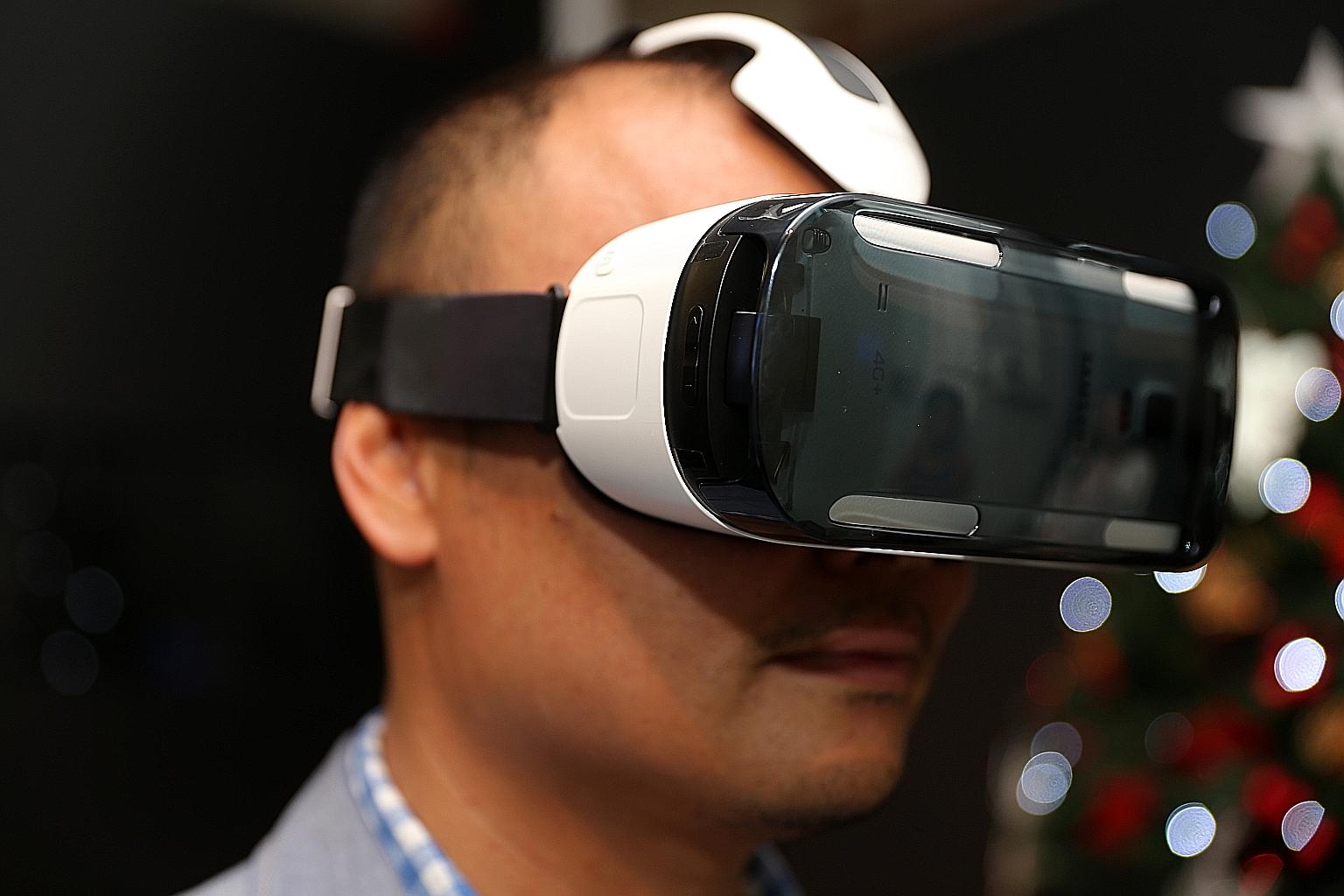Train for danger with virtual reality
Sign up now: Get ST's newsletters delivered to your inbox

With the use of 3D goggles, trainees get an immersive experience while developing skills.
PHOTO: TIFFANY GOH FOR THE STRAITS TIMES
Follow topic:
Training firefighters, soldiers or emergency medical personnel can be challenging as it is not possible to put workers in real danger.
Local multimedia firm FXMedia has come up with a solution: a virtual reality (VR) classroom, in which trainees can learn to handle dangerous situations safely. This classroom could take the form of a computer program, such as an interactive game like Counter-Strike, or a more immersive experience involving 3D goggles.
As part of this new platform, FXMedia also tapped a lip-sync technology developed by the Agency for Science, Technology and Research (A*Star).
The technology makes the scenarios more realistic by synchronising the mouth movements of the characters to the recorded voice-overs.
FXMedia director Joeie Oon said: "The technology analyses the dialogue, including the tone and mood of the voice, and generates lip movements and body gestures to match."
Compared with a role-play, in which a human acts as the irate customer, the VR classroom allows the students to experience a wider variety of situations.
Mr Oon said: "The trainer can create more scenarios in a virtual world, compared with the real world. For instance, students can be transported to a different location more relevant to their jobs, such as a ship or an airport tarmac. This cannot be achieved with role-play."
The lip-sync technology was developed by A*Star's Institute for Infocomm Research. FXMedia leased it from Exploit Technologies, A*Star's commercialisation arm, last year to incorporate it into its VR programs.
The success of the lip-sync technology lies in a series of algorithms that enables the program to detect voice inflections and translate them into on-screen movements.
Without the lip-sync technology, it could take days to manually synchronise the character's mouth movements to the voice-overs, Mr Oon said.
The next step is to incorporate different levels of complexity into the Virtual Training And Learning System, so firms can use it to train people of varying experiences, ranks and job scopes.
FXMedia is also working with A*Star to develop a VR Editor Technology, which will bring various aspects of developing a VR program - such as graphic design and voice-over recording - into a single platform.
This will be useful for companies, Mr Oon said, as they would be able to tweak their training programmes as they develop.
He noted that A*Star played a key role, adding: "We do not have any extra resources for research and development, but the partnership with A*Star has provided us with a buffet of resources we can tap to improve our products."
Audrey Tan

